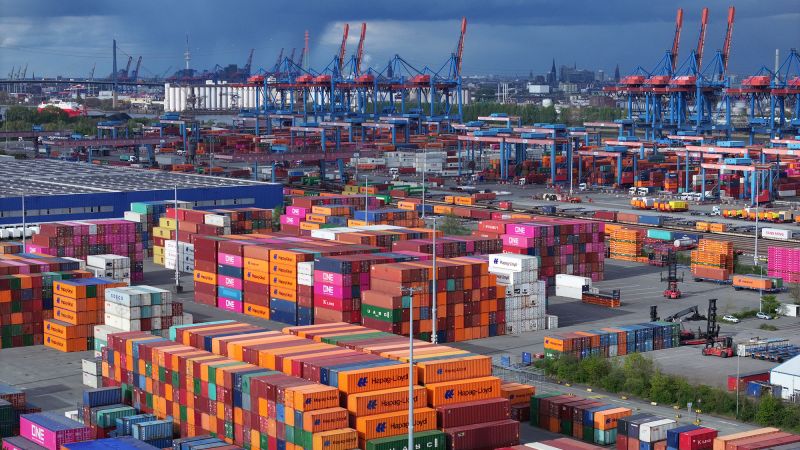In the first quarter of the year, Europe’s economy exhibited signs of vigor, displaying a growth rate that outpaced its previous quarter’s performance, generating a positive sentiment among economists and policymakers alike. Gross Domestic Product (GDP) for the 20 nations utilizing the euro surged by 0.4%, a notable increase when compared to the 0.2% growth witnessed in the closing months of 2024. These figures were brought to light through official statistics released on a Wednesday that showcased the region’s aspirations for continued economic recovery. However, this optimism proved to be short-lived as unfolding events soon overshadowed the encouraging data.
The turning point occurred on April 2, when President Donald Trump made a sweeping announcement regarding an array of new tariffs imposed on almost every trading partner of the United States. Among these measures, a significant 20% tariff was levied on goods imported from the European Union (EU). The implications of this decision were profound, leading to a drastic revision of the economic growth outlook for Europe. Given that the European economy relies heavily on exports — with the United States being its foremost destination — the prospect of a burgeoning trade conflict left many analysts and business leaders uneasy.
While President Trump did introduce a temporary 90-day reprieve on what he referred to as his “reciprocal” tariffs — in line with his perspective on international trade practices — the likelihood of negotiating the 20% tariff downward seemed increasingly bleak. The uncertainty brought about by the tariffs had immediate repercussions, triggering a reevaluation of economic forecasts for the EU. Existing tariffs on essential commodities, such as steel and aluminum, at rates reaching 25%, along with similar measures applied to vehicles, remained intact and continued to apply across all trading partners, including those within Europe.
The ramifications of the tariff measures have reverberated through the business landscape, where companies importing European goods must grapple with increased costs. These entities face the difficult choice of either absorbing the costs themselves or transferring the financial burden onto consumers, resulting in potentially higher retail prices for items such as automobiles and pharmaceuticals. Consequently, both business and consumer confidence in Europe began to wane. Notably, the European Commission’s economic sentiment indicator fell to 93.6 in March, marking its lowest point since December prior. Carsten Brzeski, the global head of macroeconomics at ING bank, underscored this sentiment drop as a direct reflection of the chaotic environment created by burgeoning tariff tensions.
Brzeski articulated concern that unless significant adjustments are made to U.S. trade policy, a prevailing sense of trepidation regarding economic activity within the eurozone would likely persist. Prior to Trump’s announcement, various indicators pointed toward a robust economic rebound, including a strong labor market with unemployment rates at 6.1%. Additionally, consumers appeared to be loosening their purse strings after several years of restrained spending prompted by inflation concerns, bolstered further by a manageable inflation rate of 2.2%.
In response to economic conditions, the European Central Bank adopted a proactive approach, reducing credit costs for consumers and businesses by lowering its benchmark interest rate seven times through its current easing cycle. One of the recent reductions took place on April 17, with a quarter percentage point cut being made. Furthermore, optimism grew when the German parliament passed an ambitious €500 billion (approximately $570 billion) investment fund exempt from constitutional debt limits, aimed at fostering pro-growth infrastructure initiatives.
Nevertheless, the anticipated benefits of these measures collided with the adverse effects of Trump’s tariffs, particularly in Germany, the largest economy within the eurozone. As the government under Chancellor Olaf Scholz prepared to depart, it revised its growth estimates for the year down to zero, acknowledging the challenges posed by the trade war and the successive declines in output over the preceding years. As we move forward, the interplay between U.S. trade policy and Eurozone economic performance remains an urgent focal point for analysts and policymakers alike, one that could reverberate across global markets and influence economic stability deeply.



